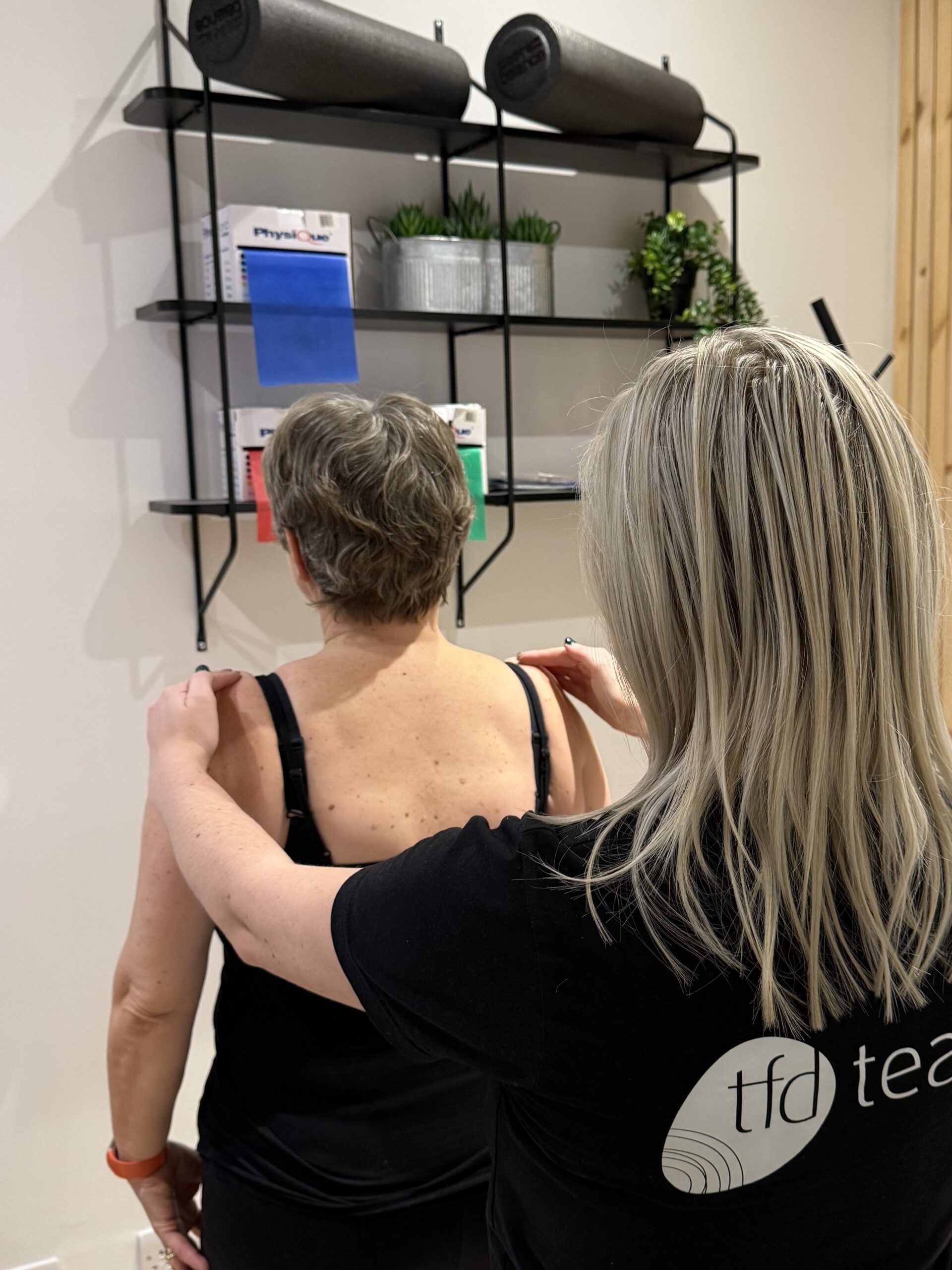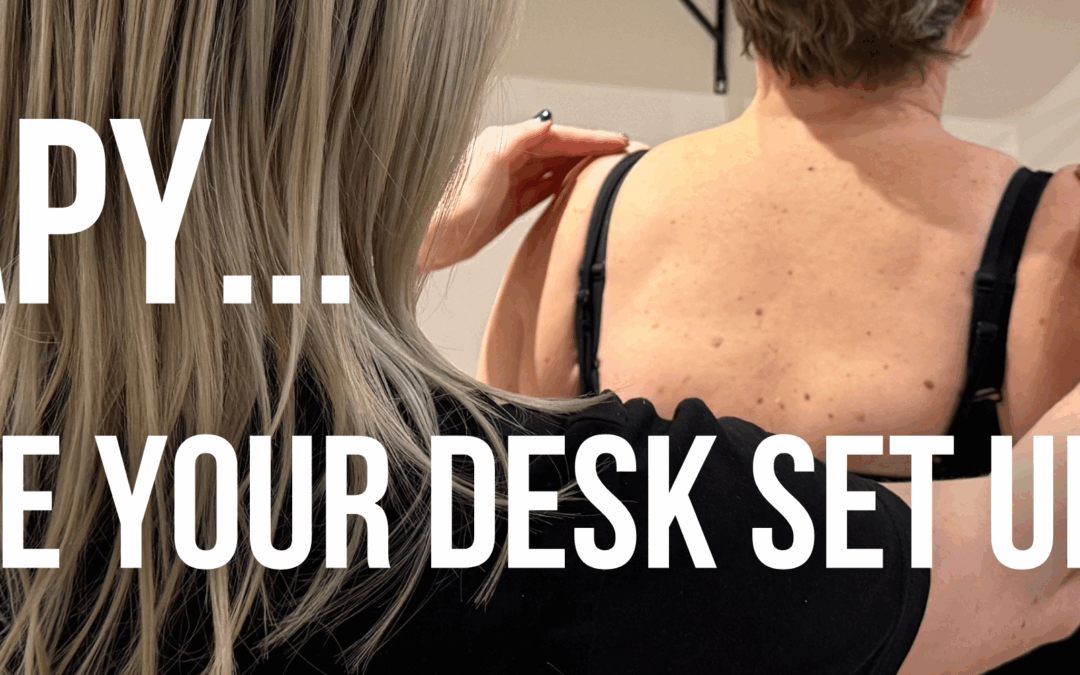The way your workstation is set up has a huge impact on your posture. Aim for a layout that supports natural alignment. This means your monitor height and your screen should be at eye level and about an arm’s length away. You shouldn’t have to tilt your head forward or look down. Use a chair with good lumbar support and allow your lower back to maintain its natural curve. Keep your feet flat on the floor or on a footrest and avoid crossing your legs. Keep your keyboard and mouse close, so your elbows remain at a 90-degree angle, and your wrists stay straight.

Strengthen Posture Muscles…
Strong muscles support good posture. Incorporate posture-friendly exercises into your routine:
- Chin tucks (to align the head and neck)
- Wall angles (to open up the chest and improve shoulder mobility)
- Planks and bird-dogs (to strengthen the core)
A few minutes daily can correct muscle imbalances caused by hours of sitting.
Stretch Often…
Tight muscles contribute to bad posture. Prioritise stretches that release tension in:
- Neck and shoulders (neck rolls or shoulder shrugs)
- Hip flexors (lunges or standing hip stretches)
- Chest muscles (doorway stretch)
These areas often become tight from hunching forward or sitting too long.
Be mindful of your posture, as posture is often habitual. Set gentle reminders to sit tall with your shoulders relaxed and back. Avoid craning your neck toward the screen, keep your ears aligned with your shoulders and engage your core gently. Sticky notes on your computer, posture apps, or wearable fitness trackers can help keep you aware and moving throughout the day.

